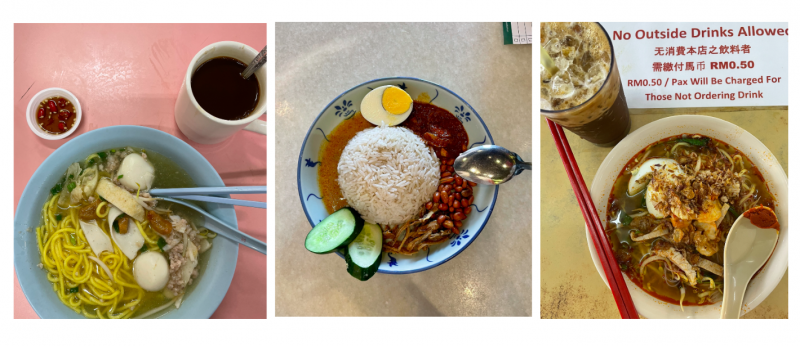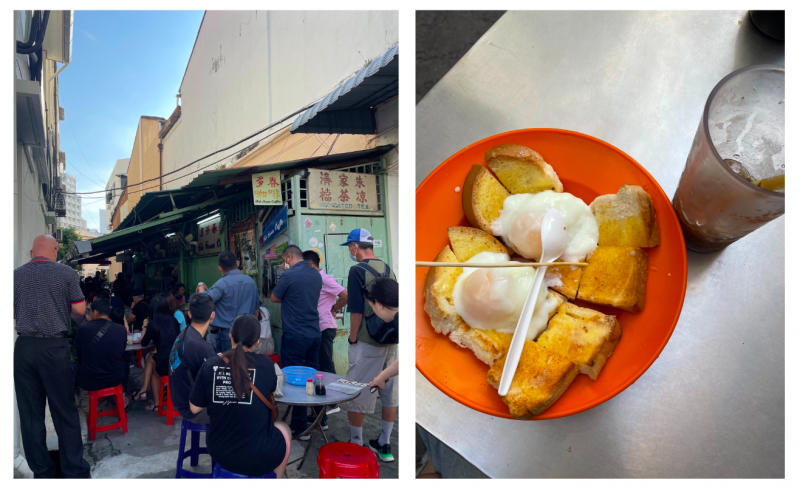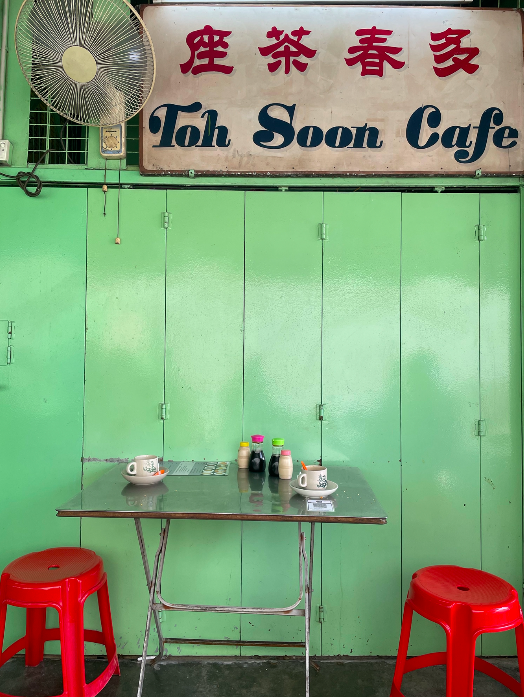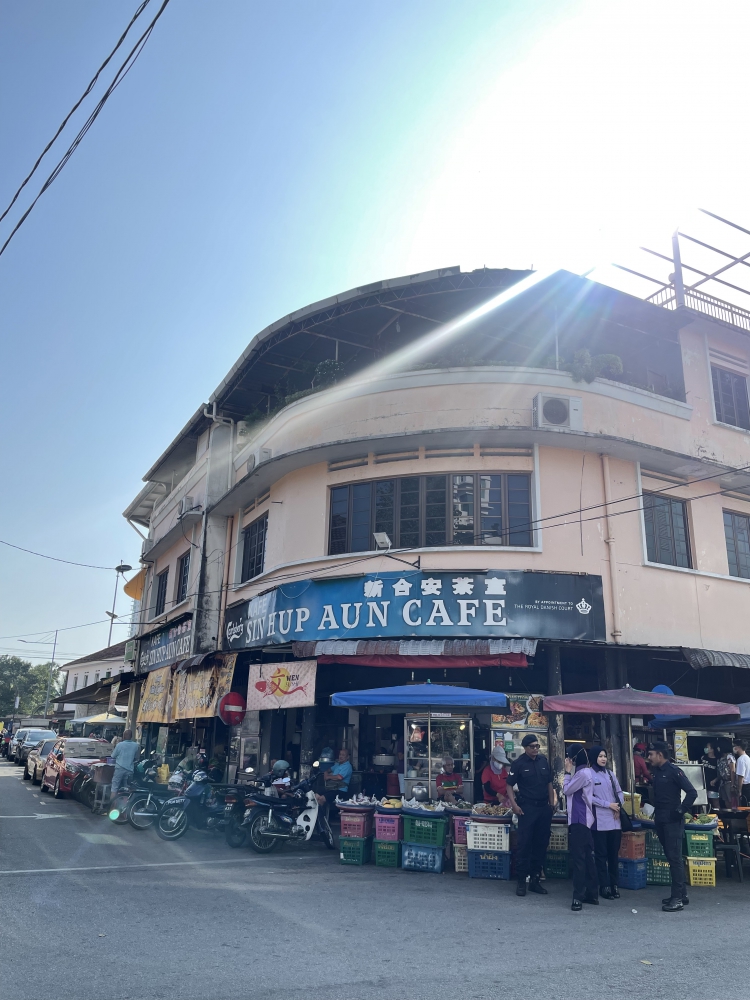A coffee tradition hundreds of years old, rooted in Robusta and layered in idiosyncrasies, intrigues art curator and voracious traveller, Nicole Siegenthaler. You don’t want to miss this journey through Malaysian coffee culture…
Originally published in Issue 44 of The Coffee Magazine
Words by Nicole Siegenthaler
When I touched down in Malaysia for the first time last July on the foodie paradise of Penang Island, I arrived like any good millennial: unapologetically armed with carefully curated lists of street food, fine dining and of course specialty coffee spots. For the first few days I happily indulged in multiple meals, chasing second breakfasts with a pour over or searching out just one more late night snack at any of the numerous street food markets. I drank some of the wildest single origin coffees I’ve tasted to this day, roasted both right on Penang Island as well as sourced from the famed roasteries of Europe. My daily coffee consumption easily doubled as I frantically tried to visit each recommended slow bar and cafe.

In my caffeine fuelled explorations of the UNESCO World Heritage central district of the city, I found myself frequently passing an alley off of the otherwise calm Campbell Street – every time, a queue of minimum twenty people snaked out of the alley. Curiously, the queue’s inhabitants seemed to be a mix of foreign tourists, locals, backpackers, families, young and old. By the third day I asked my guest house what everyone was queuing for and with that, was introduced to the kopitiam.
Before I go into the delights of my first kopitiam visit at the famed Toh Soon Cafe, what is a kopitiam? Why, as a coffee aficionado, had I never come across a mention of the kopitiam in my preparation for months of travel across South East Asia?
Kopitiam = Coffee shop
First, the name kopitiam itself reflects the unique Malaysian and Singaporean culture where they are so ubiquitous: “kopi” meaning coffee in Malay and “tiam” for shop in the Hokkien Chinese dialect. Kopitiams are coffee shops welcoming a mix of cultures, reflected through its menus and maddeningly difficult to pin down structure: some, like Toh Soon Cafe, are open air, tucked into alleys or under awnings. Some pleasantly reside in the 19th century row houses found throughout Malaysia and Singapore. Others are simply the hawker centre themselves – as long as there is a classic kopi stall to be found, I’ve found locals will comfortably deem it a kopitiam.

But now, how do you know you’re drinking kopitiam “kopi” and not just regular coffee? To begin, kopi is always made with robusta beans. The less desired robusta was the affordable option for the blue collar Chinese working class who founded the original kopitiams across in the late nineteenth century. To improve the flavour and quality of these cast-off beans kopitiam owners roasted them with butter, margarine or even sugar to transform it into a rich, dark caramelised bean with a slick oily texture.
Once ground, the beans are brewed in a pot and then strained through a long sock several times to cool and aerate the kopi. The standard cup of kopi is mixed with sugar and a dash of condensed milk resulting in a thick, heavy cup with a hot chocolate-like sweetness. But don’t be fooled: due to the already high caffeine content of robusta, kopitiam kopi can have up to double the amount of caffeine as its arabica counterpart. This necessary morning fuel for so many Malaysians and Singaporeans remains affordable: a regular kopi is usually no more than two ringgit, or R8.
Starbucks has nothing on the customization options at kopitiams – your kopi may be ordered without sugar (“kosong”), with evaporated milk instead of condensed milk (“kopi C”) or without milk all together (“kopi O”). Long ahead of the recent keto trends, order “Kopi Gu You” for a slab of butter to be melted into your drink, adding a hint of saltiness and extra smoothness. Add a dash of Milo to your kopi and you have my personal favourite “Hor Kar Sai” which translates directly to “tiger bites lion” in Hokkien.
Standard fare at even the most basic kopitiam stalls consists of “roti bakar” (literally, grilled bread in Malay), a selection of toasts which may be accompanied with a plate of indulgently runny, undercooked soft boiled eggs. Add a splash of soy sauce and you have a classic kopitiam breakfast. However many kopitiams these days have an expanded menu to include Malay classics such as Nasi Lemak (coconut rice with dried fish, sambal, peanuts and cucumber: the perfect balance of sweet, salty and spicy to start your day) and Chinese dishes like fishball noodle soup in Singapore or Hokkien Mee in Penang. Although run by Chinese communities, kopitiam menus are typically halal to cater to the local Muslim and Hindu populations as well.
Entering the arena
Now that we’re armed with the basic prerequisite knowledge, let’s return to that afternoon in Penang as my guest house receptionist explained with a laugh “oh that’s just Toh Soon! Famous local kopitiam that’s been around for long time lah.” I asked her if it was actually good and she shrugged non-committedly. Still, I wanted to see for myself.
The next morning I woke up early, thinking I’d be smart and miss the queue. Wrong. Arriving ten minutes after Toh Soon opened, there were at least ten people in front of me. No problem, I would study the menu on Google while waiting to make sure I could order like a pro and fit right in once my moment finally arrived.
This is the part where I must tell you: reader, I was not prepared. For all of my time spent socialising, procrastinating and indulging in coffee shops, I knew nothing about the kopitiam culture and twenty minutes spent reading Google reviews was not going to change anything.
The queue inched forward as I got closer and closer to the mouth of the alley, revealing a dozen low metal folding tables with bright red and blue plastic stools all occupied with diners. I marvelled at the lone waitress who seemed to be simultaneously acting as air traffic control, cashier and head mistress as she barked orders to the two staff grilling bread and pouring kopi for the entire alley. She marched confidently up and down her terrain, never quite making direct eye contact with her customers. This of course was a power move: she was the alpha dog of this kopitiam. And I, being the rule follower, type A millennial traveller that I am, I wanted to impress her.
That is how I learned the first and most important rule of a kopitiam: be observant because there are often decades of unspoken tradition woven into these spaces. As I continued to frantically read through every Google review of the last eight years, she appeared at the front, impatiently holding up one finger. Each group in front of me either shook their heads or offered blank stares, prompting her to jump to the next for a split second before giving the next couple a chance. I watched her skip the first five or six groups in the queue before I realised: she needs a solo diner to fit one seat. It’s *me*, this is my opportunity!

Just as she was about to turn back into the alley, I stepped forward, shyly mirroring her gesture and holding up one finger. Barely giving me a once over, she continued into the alley. Had I made a mistake? She looked back impatiently, confirming that I simultaneously had interpreted her signals correctly and pissing her off by not immediately following her. I scurried between plastic stools and past the two metal carts set up to serve the entire kopitiam their morning breakfast to the last table of the alley: a two top presently half occupied by a Chinese uncle finishing his toast and egg.
Sitting there wide eyed with my luck (skipping half the queue *and* being forced to share a table like a local? Time to buy a lottery ticket) I was instantly humbled as I realised I had no bravery to face our kopitiam leader again. Thankfully, my seat mate could smell my fear and called her over in Hokkien, allowing me to carefully recite the order for kopi and toast I’d memorised. We continued chatting when less than five minutes later, both arrived. Suddenly I was sharing a conversation and morning kopi at the kopitiam just as generations of Malaysians and Singaporeans have to this day, passing by their local kopitiam on the way to work or to meet up with family.

Comfort
This is where the charm of the kopitiam lies: it offers up the perfect balance of familiarity, convenience and affordability to be a very appealing (and not to mention, delicious) quick pick me up dining option. The developed, unique culture of each kopitiam allows its guests to wear the title “regular” like a badge of pride. Crack the code to the kopitiam (is there a set menu? What’s the queuing system? Do you order your kopi and food from separate waiters?) and you too may one day qualify as a regular.
After my initial visit to Toh Soon Cafe on that first trip to Malaysia, I became obsessed with visiting as many kopitiams as possible, observing each one’s rules and slight menu variations. I was less concerned with hitting the “best of” lists for specialty roasters and more preoccupied with nailing the correct pronunciation of “hor kar sai”.
Ultimately in my return trips to the region I have eased back on my daily trips to the kopitiams, though I must admit it is the first stall I search for at the Singapore airport upon arrival. I know many older generations will agree with me: there is a level of warmth in a cup of kopi that is so developed, deep and sweet. It’s generations of kopitiam towkay (“bosses” in Hokkien) wok frying the under-appreciated robusta with butter, making something for their community out of little like so many immigrants before. It’s the uncles gathered around a chess board on a weekend afternoon for their weekly match (and gossip). It’s the first meal for the taxi driver before his twelve hour shift.
It certainly is not specialty. But it is wildly comforting.

You can read the whole of Issue 44 right here: